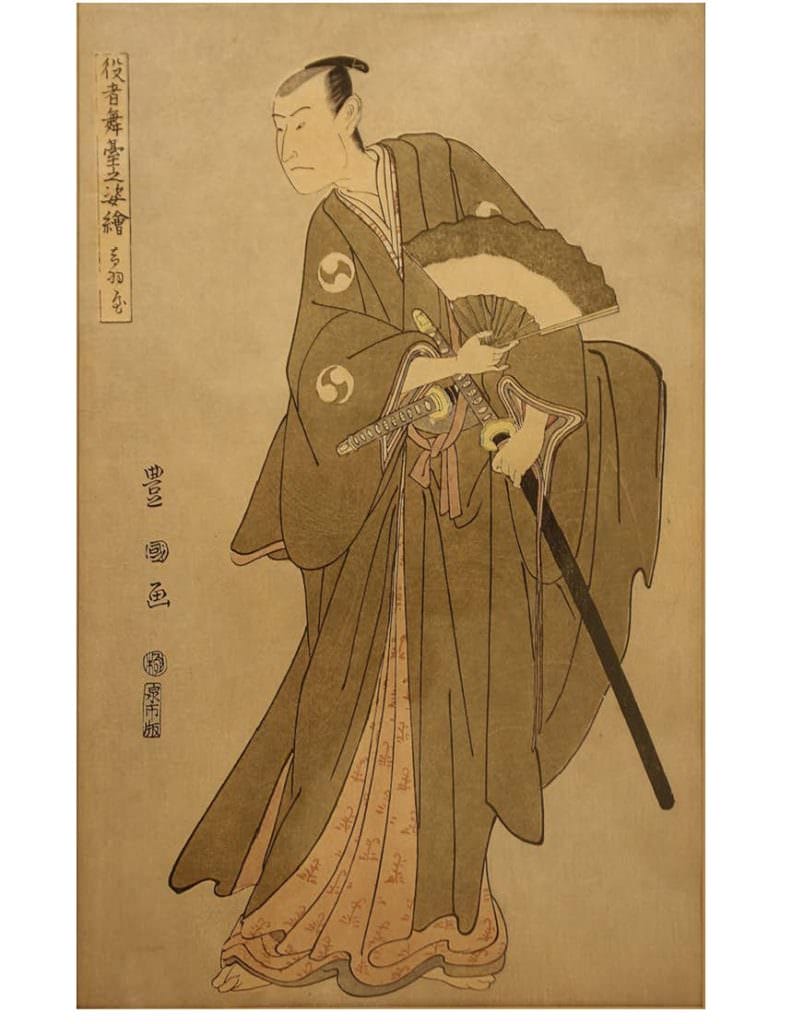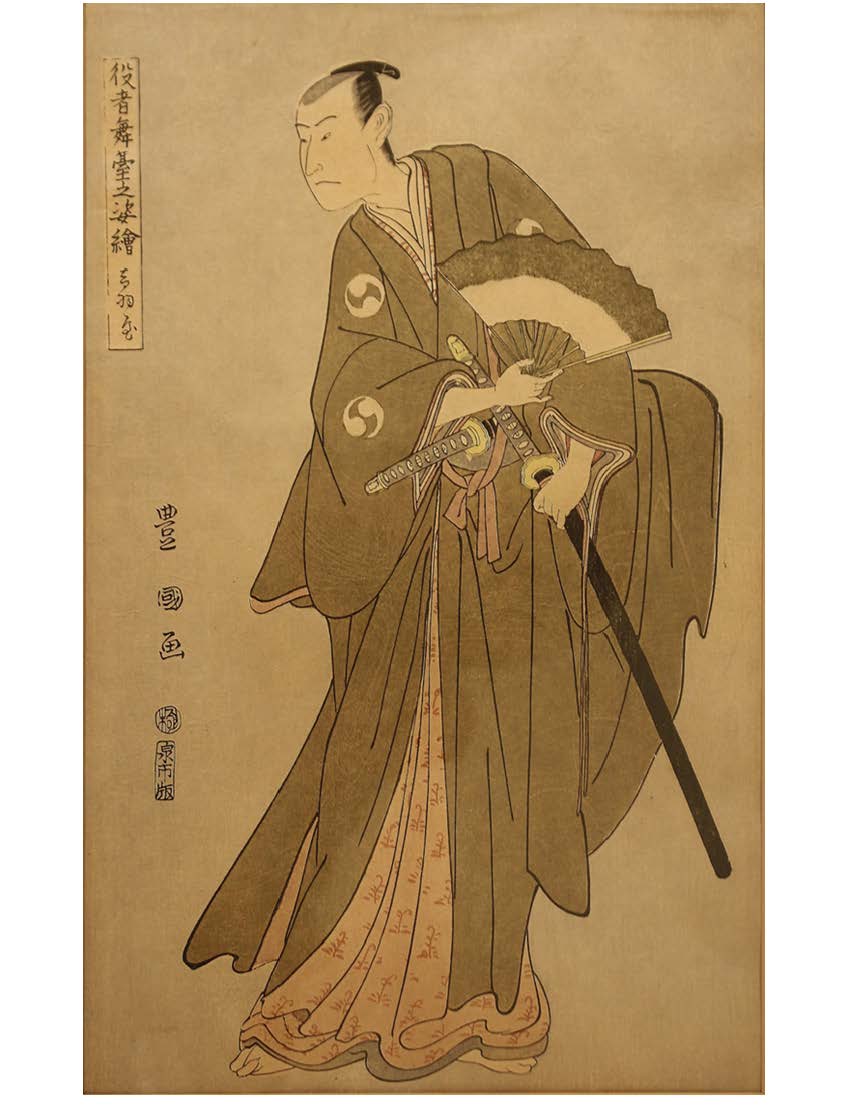
Japanese Woodblock Print of Kabuki Actor, Oyawa-ya Onoe Matsusuke, as Oboshi Yuranosuke in the Play The Forty-seven Samurai. Asian Arts & Culture Center Collection, Object #P-026
Joanna Pecore
Asian Arts & Culture Center, Towson University, Towson, Maryland
Discovery Questions
What can art objects from distant times and places express about the identity of the people and the cultures depicted in them?
How would students represent group identity in a portrait?
How can exploring this question help students to build research, observation, and analysis skills?
Materials (all accessible from lesson plan link in sidebar)
- Image: Japanese Woodblock Print of Kabuki Actor, Oyawa-ya Onoe Matsusuke, as Oboshi Yuranosuke in the Play The Forty-seven Samurai. Asian Arts & Culture Center Collection, Object #P-026
- “About the Image” Information Sheet for the teacher
Preparation
- Study the image and download it to project for students.
- Read “About the Image.”
- Review activities and adapt for your class.
Activities
Part 1
- Share the image with your class.
- Ask students to make observations (What do you see?) and share them with the rest of the class.
- Ask students to analyze.
- What might these observations tell us about the person in the picture?
- What might the clothing, hair, accessories, and text help us learn about the person’s identity?
- As students analyze the image in a class discussion, share information about the image to affirm, encourage, and supportively redirect student analyses.
- Once the class seems satisfied with their decoding of the image, transition to a discussion about portraiture and identity.
(Discuss the Image)
- Who do you think created this portrait?
- Why?
- What do you think the creator hopes the viewer will see in terms of the person’s individual identity?
- What does the creator hope the viewer sees in terms of the person’s social identity?
- How do the clothing, hair, accessories, and other elements contribute to this perception?
- Who are the viewers?
- Do you think they see what the creator intended?
- What else might they see?
(Discuss Portraits in General)
- Based on the responses above, what is the purpose of a portrait?
- What strategies do portrait artists use to accomplish their goals?
- What role do dress and adornment play in portraiture?
- How would you define a portrait?
- Create a definition of portrait as a class. (Make it provisional if students are not comfortable with finalizing it).
Part 2
- Ask students to research, observe, and analyze portraits in their homes and community based on the working definition of a portrait students created. They may photograph or sketch examples to share in class.
- In a class discussion of students’ examples, consider these questions.
- What messages does it convey? How?
- Who is the presenter?
- Who is the audience?
- How is it staged?
- What role do dress and adornment play in expressing those messages?
Part 3
- Create a classroom portraiture studio to create group portraits. Ask them to call on the class definition of a portrait as they work.
- Divide the class in half. Assign half the class the role “portrait artist” and assign half the class to the role “portrait subject.”
- Ask “portrait artists” and “portrait subjects” to work together to define a group identity for the “portrait subjects” and identify strategies for expressing the group identity through portraiture by revisiting the questions above.
- The groups work together to plan and create a group portrait that may be a photograph, sketch, painting, or collage.
- Display the final portrait and ask students to write reflections on the process and the final product, the portrait.

